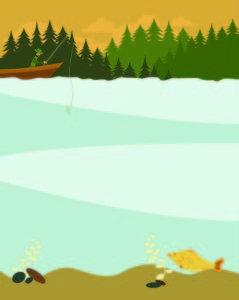Trending
Arc•tic Char (n): Dive into a Canadian delicacy
June, 2017

Summer has arrived in St. Albert,and so has barbecue season! We’re ready with our Alberta beef, our farm-raised chicken and our Taber corn. But how about grilling up something different (yet equally Canadian) this season? Arctic char has been making waves across Canada’s culinary scene and is sure to make a splash at your next backyard cookout. Read on to learn all about this resilient (and delicious) species of fish.
What Is Arctic Char?
Arctic char is an anadromous cold-water fish. In other words, it lives in northerly ocean waters and moves to freshwater lakes and rivers to spawn. Also known as common char, alpine trout, alpine char, sea trout or iwana (as sushi), Arctic char is part of the Salmonidae family, along with salmon and trout.
Where Does It Live?
This fish loves cold, oxygen-rich water and, therefore, lives in alpine lakes and rivers, as well as arctic and subarctic coastal waters in North America, Iceland, Greenland, Europe and Asia. In fact, no other freshwater fish has been found as far north as Arctic char has.
What Does It Look Like?
Arctic char looks similar to salmon but can range in colour from white to light pink to dark red, depending on the time of year and its environment. Most Arctic char that go to market are between two and five pounds each; however, a single fish can weigh as much as 20 pounds.
An Eco-Friendly Choice
Although there are commercial fisheries for Arctic char (mainly in Northern Canada and Iceland), most of the Arctic char we buy is farmed. Iceland is the world’s main supplier of farm-raised Arctic char, but there are also suppliers in Canada, the United States and Nordic countries such as Norway, Sweden and Finland.
Most farm-raised Arctic char is considered eco-friendly. In fact, when you’re shopping for it, you’ll often see info on the packaging that rates it “Best Choice/Green” by the Monterey Bay Aquarium Seafood Watch Program and the Environmental Defense Program Seafood Selector, which means the fish has been “well-managed and caught or farmed in environmentally friendly ways.”
Farmed Arctic char is typically raised in onshore tanks rather than open netpens in the sea. These onshore fish farms not only prevent farmed fish from escaping but also emit less pollution than netpens do, which is why they are considered environmentally sustainable.
How Does It Taste?
Many say Arctic char tastes like a cross between salmon and trout: rich in flavour, medium in firmness and light in texture. Arctic char is, however, milder in flavour than salmon, so those who like trout but don’t enjoy salmon might want to give it a try.
Cooking Arctic Char
Arctic char is a versatile, easy-to-prepare fish that’s delicious baked, broiled, grilled, smoked or served as sushi and sashimi. Use it as a substitute in any salmon or trout dish, but remove the skin before you start cooking (it tends to get thick and leathery). High in healthy fats, Arctic char stays moist (unless, of course, you overcook it).
Part of Canadian Culture
In Canada, Arctic char is found in the Yukon, the Northwest Territories, Nunavut and Newfoundland’s coastal waters, as well as in Ungava Bay, Hudson Bay and the St. Lawrence River.
In recent years, Arctic char has grown in popularity across our country. However, this fish species has been a main staple in the Canadian Inuit diet for centuries—it’s even enjoyed frozen, like eating a popsicle. Arctic char has also been an important source of income in Canada’s far north for many years. Commercial fisheries operate in ocean tidal waters
and river waters throughout the region. t8n
Did You Know?
Arctic char is not only delicious but also healthy. This fish is high in omega-3 essential fatty acids (about one gram in a 3.5 ounce serving) and is low in mercury.
Fun Fact
Like true Canadian dwellers, Arctic char thrives in the cold. It is the only fish species found in Lake Hazen on Ellesmere Island in the Canadian Arctic, which is known to many as Canada’s northernmost lake.












